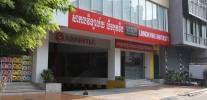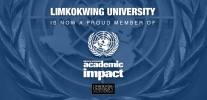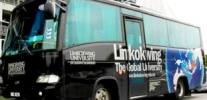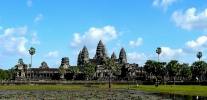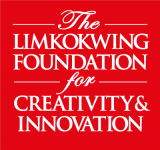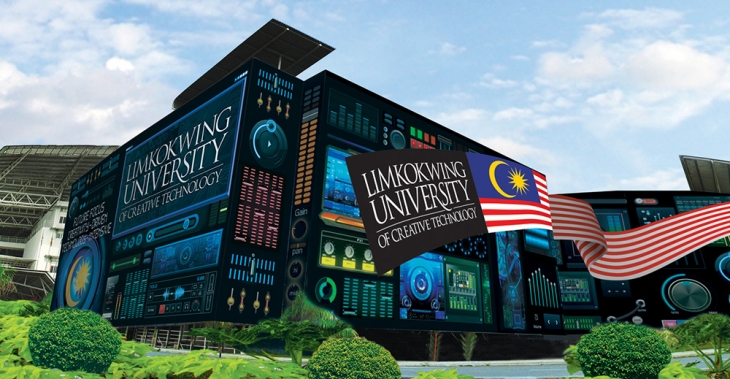- A Lesson In Wartime Diplomacy
- Kirstie Maximus: Maximising Artistry Through the Music…
- Shape Spaces and Design the Cities of Tomorrow
- Shape Spaces and Design the Cities of Tomorrow
- Shape Spaces and Design the Cities of Tomorrow
Latest News
Quick Facts
Since its inception, the university's focus on Creativity & Innovation has enabled the students to think out of the box. With its different, innovative kind of learning concept The Global Experience.
Limkokwing Journey
From inception – in 1991 – the Limkokwing University of Creative Technology has been sensitive to market demands because it felt a strong responsibility to produce graduates who are able to make a smooth transition from classroom to workplace. Here is a synopsis of its development and eventual global expansion.
Fitting into a national scenario
The Sixth Malaysia Plan (1991-1995) accorded education as high national priority. The country was beginning to pick up pace in its development as it shook off the effects of the mid'80s recession. Export was identified as the engine of economic progress. To gain a competitive edge Malaysia needed skilled and creative human resources to design, to plan, to strategise.
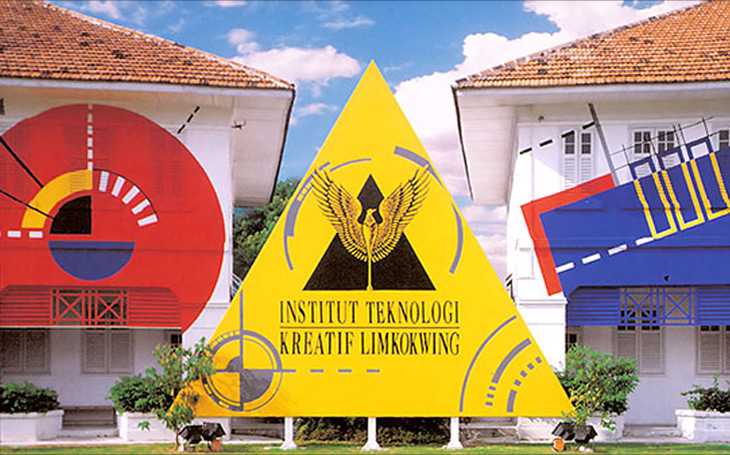
Creative Emphasis and Industry Focused, from inception
The Limkokwing Institute of Creative Technology (as it was known then) was established to play an active role enabling much needed technology transfer in the area of creative education. The Institute had started to create strategic links with reputable and well-established universities and colleges in UK, USA, Canada, Australia and New Zealand. At the same time the Institute had forged strong connections with industry to provide guidance and support to enable the right environment of learning to students.
Limkokwing works with its International Partners that enable students to spend a semester or two in a number of choice campuses located worldwide.
The Institute was the first step forward towards achieving a successful and rewarding career for students. For parents the Institute was an eye-opener as they began to see the wide-ranging possibilities in creative careers. For industry it gave them an opportunity to participate in nurturing much needed creative capability. For government the Institute was a primary resource in developing creative capital.
For the next ten years the Institute set the pace for the education community. The philosophy was simply to empower the individual. And in doing so the Institute grew. It expanded. It upgraded. It reviewed. It revamped.
Industry requirements and global trends were its yardsticks as the Institute introduced new studies that were relevant to the times and also in anticipation to the future needs of the nation. Designing itself was a major expansion – Graphic, Electronic, Product, Industrial, Interior, Multimedia, Information, Communication, and Animation.
Industry collaboration gave wonderful opportunities for students to engage their creative expressions in real work experience. These included work developed for restaurants, hospitals, manufacturers, resorts, publishers, humanitarian foundations, societies and clan associations, councils, public relations companies, municipal councils, government ministries, and non- government organisations. The work has been wide-ranging from the type of creative input needed to the type of organisation that required the input.
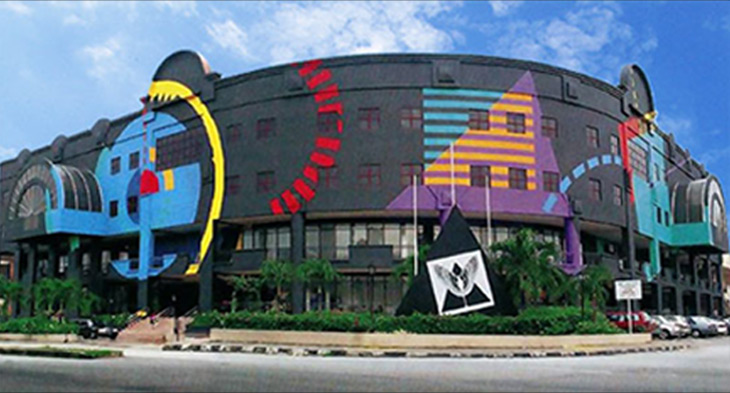
A New Millenium and New Global Challenges
The world was sizzling with possibilities. The range had become international with students from around the world coming to study here as well as our graduates having the opportunity to study anywhere and work anywhere.
Every move made by the Institute has been strategic to match the aspirations of the nation. Being an educator the responsibility adds pressure in that we have to keep several paces ahead to anticipate and provide the kind of environment, training, nurturing and learning that not only the students need but faculty and staff as well.
In addition the Foundation for Creative Excellence creates a special pathway for those with the talent but without the financial support to realise their dreams. The Foundation helps the nation use the talent that may otherwise remain untapped and capable individuals unfulfilled.
Two years into the new millennium the Institute became the first private college to be recognised as a University College.

This was an era of knowledge. The University College had come into full grasp of its capabilities especially in nurturing creativity. Creativity was at the core of knowledge because data and information needed to be converted into content. It takes creativity to present knowledge in its various forms – books, newspapers, magazines, videos, film, Internet (such as websites pages), multimedia software such as CD-Roms, advertising materials and other communication materials.
The University College had now expanded its role to help industry expedite its entry into the k-era. The setting up of the Malaysia Design Innovation Centre (MDI) provided the resources for industry to explore and experiment new ideas needed to upgrade its positioning in a world market.
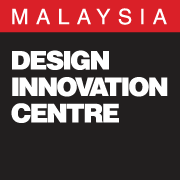


MDI, set up within the University College as its R&D arm provided incubation possibilities for those enterprises who wished to test new ideas without having to spend millions. In addition its archives stocked creative ideas by students which could ignite commercial possibilities. This idea bank provided a shortcut for enterprises intending to source new products to meet new demands.
Moving the nation up the value chain
Possessed with an innovative mindset, the University College had always been called upon to advise the government on matters related to economic development and these were wide ranging from:
-

Overcoming social problems from "lepak" to smoking and HIV/AIDS.

Creating the blueprint for the halal initiative.
-

Mind-mapping innovation for national progress.

Transforming the rural heartland.
-

Addressing a financial crisis.

Communicating on international relations.
-

Assisting small and medium sized enterprises.

Creating a national brand image.
-

Promoting Kuala Lumpur as a cultural hub.

Improving government to people relations.
-

Globalising Malaysian education.

Promoting Malaysian trade.
In 2003 the University College had moved into its new campus based in Cyberjaya and by 2007 it had become a full-fledged University. The new campus signaled expansion of a kind never thought possible by a Malaysian institution of higher education.
Innovating Malaysian education
The University brought its industry focus more prominently to the fore through the incubation of business units. Students from various disciplines were brought together to create units that reflected their lifestyle. These included:
-
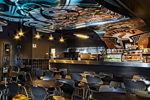
A cafe inspired by the Starbucks chain.
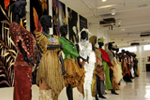
A fashion boutique of smart street couture.

An alfresco eatery with international cuisine.
-

A hair design boutique.

A convenience store.

A fitness centre.
The incubation of these units was considered revolutionary as some grew to become independent businesses that could be franchised worldwide. Foreign delegations visiting the university's premises are always taken aback by the huge café-like atmosphere of the university.
Globalising Malaysian Education
In 2006 the University that began taking in foreign students in 1997 reversed the process by taking education to foreign shores. In 2006 it received endorsement from the Government of Botswana in Africa to set up a campus in its capital city of Gaborone which we did in May 2007, with no less than the Former President of Botswana, the Hon. Festus Mogae officiating its establishment. This was unprecedented, as it clearly indicated the high regards that this diamond exporting country had for Malaysia and for this University.
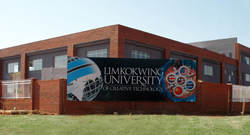
This move was immediately followed by the setting up of a campus in London, in the heart of Piccadilly, in October 2007. The campus was officially opened by the Malaysian Former Prime Minister, Tun Abdullah Haji Ahmad Badawi who diverted his trip from New York just to be in London specifically for the occasion. In the United Kingdom the setting up of Limkokwing University has stirred the British to rethink their education policies. They are waking up to the dynamics of globalisatio because Limkokwing University is the first from the Commonwealth to set up a campus in the country. The only other foreign university is American.
Following the success of the Botswana campus other African nations such as Lesotho and Swaziland had invited Limkokwing to set up campuses in their countries. In August 2008 Limkokwing opened its first campus in Lesotho in the capital city of Maseru. Swaziland will see a new campus in its capital city of Mbabane in early 2010.
In Asia the University is set up in Indonesia, Cambodia and China and is expected to travel to the United States of America to set up in New York.
In Cyberspace we are, perhaps, the most popular university website which it gets nine to ten million hits a month. People from 190 countries constantly visit the campus website and to date we have had more than 100 million hits.
A measure of success
The Limkokwing University has no parallel in the manner it has expanded and merged with the countries where it has set up campuses. The University matches its programmes with the countries' national development plans to build the kind of manpower they need to build their economies.
We are able to do this because of our own development and contribution to nation building in Malaysia that doing so overseas comes naturally.
Our success can best be measured by invitations from UNESCO and the World Bank to present our methodology in reinventing education.



